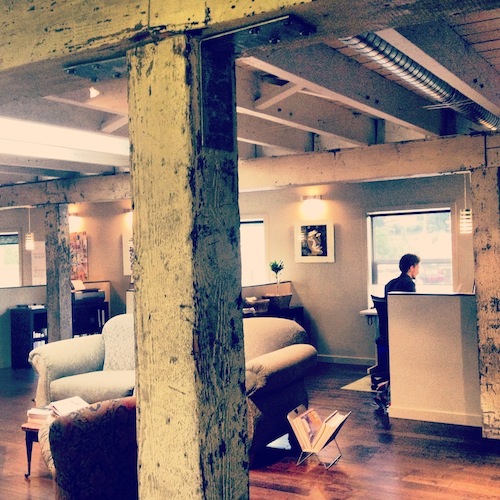This summer, I had the opportunity to do a full-time internship with BrandQuery through Western Washington University, where I’ll be completing a degree in graphic design this coming school year. Even though the Western design program’s requirements include a course on professional practices for designers, in addition to numerous projects and assignments meant to simulate actual design work, I found that stepping directly into the professional world helped me understand certain realities far better than theoretical discussion in a classroom ever could.
Even though I had a generalized mental image of the inner workings of a design firm, none of it really clicked until I was able to experience it firsthand. These are a few points that stand out the most in my mind.
Not everyone here is a designer.
At first, I was somewhat surprised to realize that only a fraction of BrandQuery’s staff were designers. When you spend all your time at school in a computer lab full of fellow students, all busily working in Adobe Creative Suite, it’s easy to forget that in the real world, this type of work is just one part of the many interrelated activities which go on every day around the office. Even though visual creativity is the firm’s core purpose, an office with only creatives on staff wouldn’t function very well without anyone around to handle budgeting, billing, project management, strategy, or any of the other tasks which support design itself.
At school, the biggest challenge of most projects is often coming up with a good idea and executing it successfully. Here, that’s just the beginning of the process. This week, I’ve been helping to prepare final production files and spec sheets for a signage project on which the design itself was finalized months ago. Though a highly-permanent design like this normally takes far longer than shorter projects like newspaper ads or business cards, the elongated time-span in this case has made it easy for me to see the large percentage of time spent on things other than design.
The coolest-looking solution isn’t always the best one.
On school projects, I’ve often designed for a hypothetical client in the form of a creative brief written by myself or my instructor. Despite this, I usually still end up leaning towards a solution which I know will appeal to my peers and teachers, my true audience, one which is very visually-attuned and accepting of the cutting-edge. This is an exciting environment to work in, and often results in interesting, original concepts. However, it isn’t a true representation of real client work, where you must consider if a design, in context, will ultimately do its job and appeal to the client and larger audience.
This is particularly noticeable in the Skagit Valley, where audiences may have more conservative visual tastes, especially compared to those of certain Seattle firms at which many of my fellow students worked this summer. This provides a unique design challenge, and has helped me learn to better analyze and critique design.
Always ask questions.
Teachers have been encouraging me to ask questions as long as I can remember, but before now, the benefit has always been primarily to me. When working on a design project, though, a question could just as easily bring up a problem or opportunity no one had considered, and help everyone involved. A greater confidence in asking questions may be the most useful thing I’ve picked up this summer.

